How to take care of orchids indoors – all your questions, answered
The experts reveal their best orchid care tips, to keep these exotic houseplants thriving and blooming for years to come
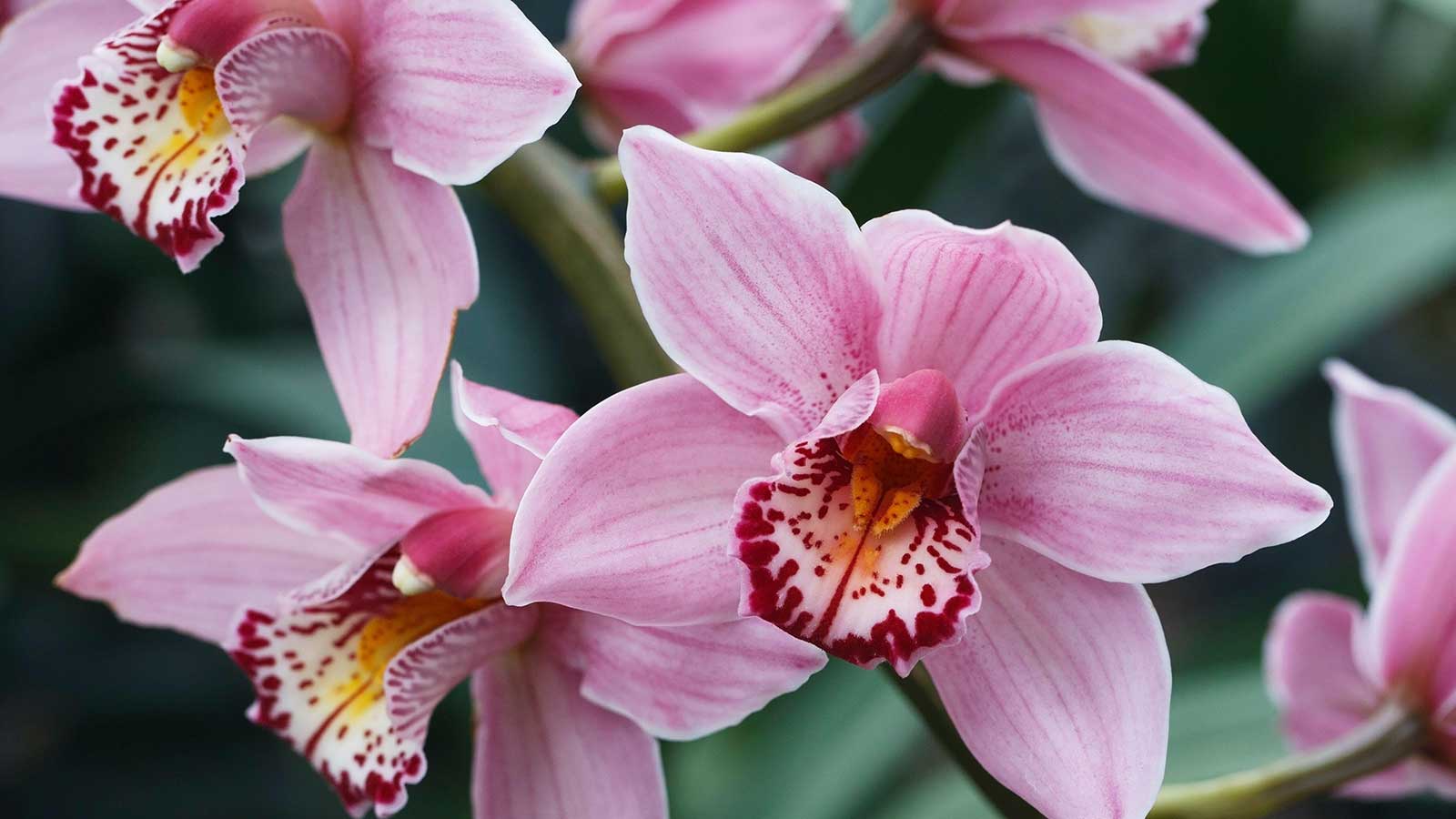

Many homeowners love to grow orchids indoors – and it's easy to see why. The blooms, often in bright colors, add beauty and elegance to any interior scheme. And with the right care, the plants can last for years.
True, orchids have a reputation for being a little fussy. But once you understand the proper conditions to help your orchid thrive, these top indoor plants can be quite straightforward to maintain.
‘While people can often be intimidated by orchid maintenance, in reality these tropical flowers are very easy to care for,’ says Paige Harmon at Westerlay Orchids. ‘Finding just the right area in your home that provides the best light and temperature is the first step to good orchid care. But of equal importance is appropriate and timely watering.’
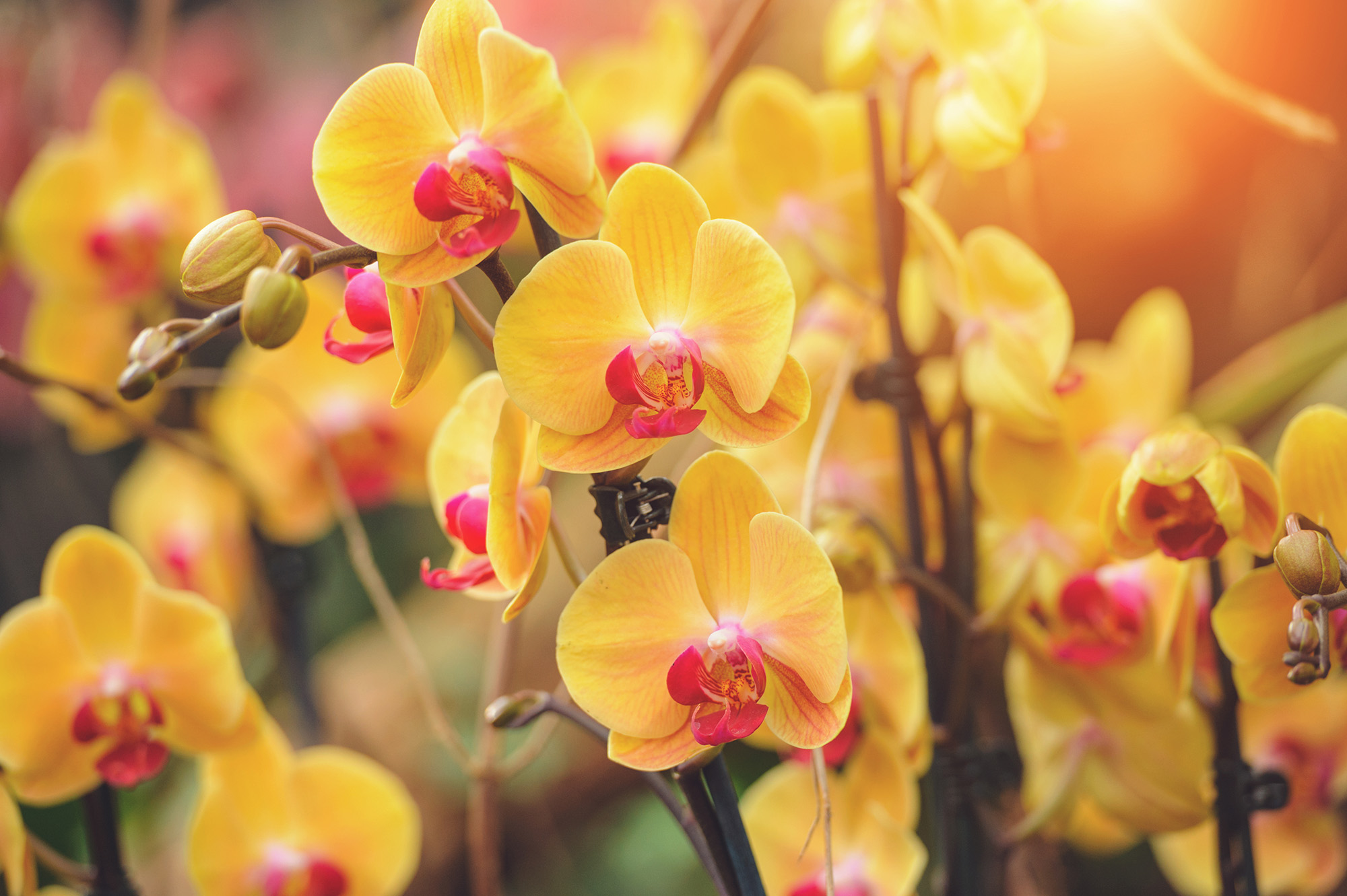
Orchids will brighten up a shelf or window sill
6 essential tips for taking care of orchids indoors
While orchid care is not particularly time-consuming, you do need to know the correct way to look after them. Otherwise, your orchid may wilt, discolor, stop blooming, or even die.
Follow these expert tips to ensure your orchid stays in good health and flowers reliably.
1. Understand orchid types
‘Orchid care seems to be a complicated issue, but it doesn’t need to be – the secret is to know what type of orchid it is, and once you provide it with the right conditions, it will look after itself,’ says Valeria Valkova, head of the nursery at world-famous grower McBean's Orchids.
‘Orchids are one of the largest plant families, yet out of the tens of thousands of species, fewer than 100 species and a handful of genera are widely commercially grown. These include phalaenopsis, dendrobium, cymbidium, paphiopedilum, cattleya, and oncidium,’ says Brad Biren, an experienced botanist with a specialty in orchidology.
He explains that dendrobium, cattleya, cymbidium, and oncidium belong to the same ‘tribe’, requiring similar care, while phalaenopsis and paphiopedilum orchids have slightly different needs.
If you aren’t sure, Biren suggests looking at the stems and leaves. To identify the dendrobium ‘tribe’, ‘imagine all of your orchids that have canes, pseudobulbs, or a very clear stem.
'Phalaenopsis has mostly large floppy leaves and an almost indistinct stem. Paphiopedilum or lady slipper orchids have longer narrower leaves and are by far the most challenging within this group.’
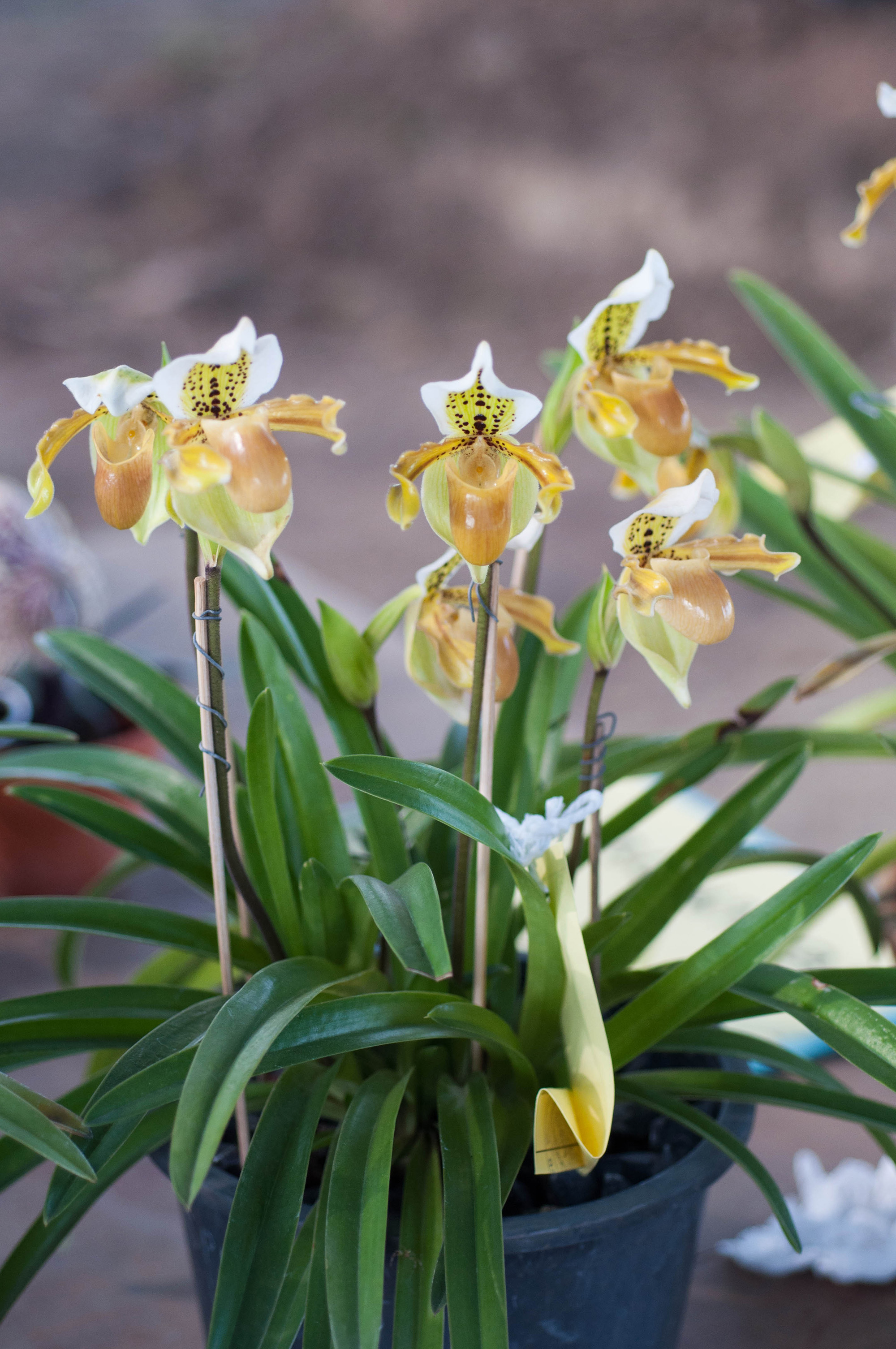
A lady slipper orchid
2. Check your orchid’s temperature range
Temperature requirements vary between different orchid types, but getting it right is an important aspect of orchid care.
‘Their preferred temperature very much depends on plant origins – for example, moth orchids (phalaenopsis) are tropical and warm-growing, while cymbidiums are from the Himalayas and tolerate much cooler conditions,’ says Valeria Valkova.
Paige Harmon recommends that for most orchids the best range is 65-80°F while blooming. However, there is variation between different species, while orchids also benefit from a slightly lower temperature at night (10-15°F cooler). For more information on the temperature requirements of your specific orchid variety, check the resource center at American Orchid Society.
While your orchid may tolerate some degree of being too warm or too cold, be careful this isn’t for a prolonged period. ‘Heating improperly will lead to adverse side effects for your orchids, including causing their tissue to dry out and wither prematurely,' says Lindsey Hyland, founder of Urban Organic Yield.
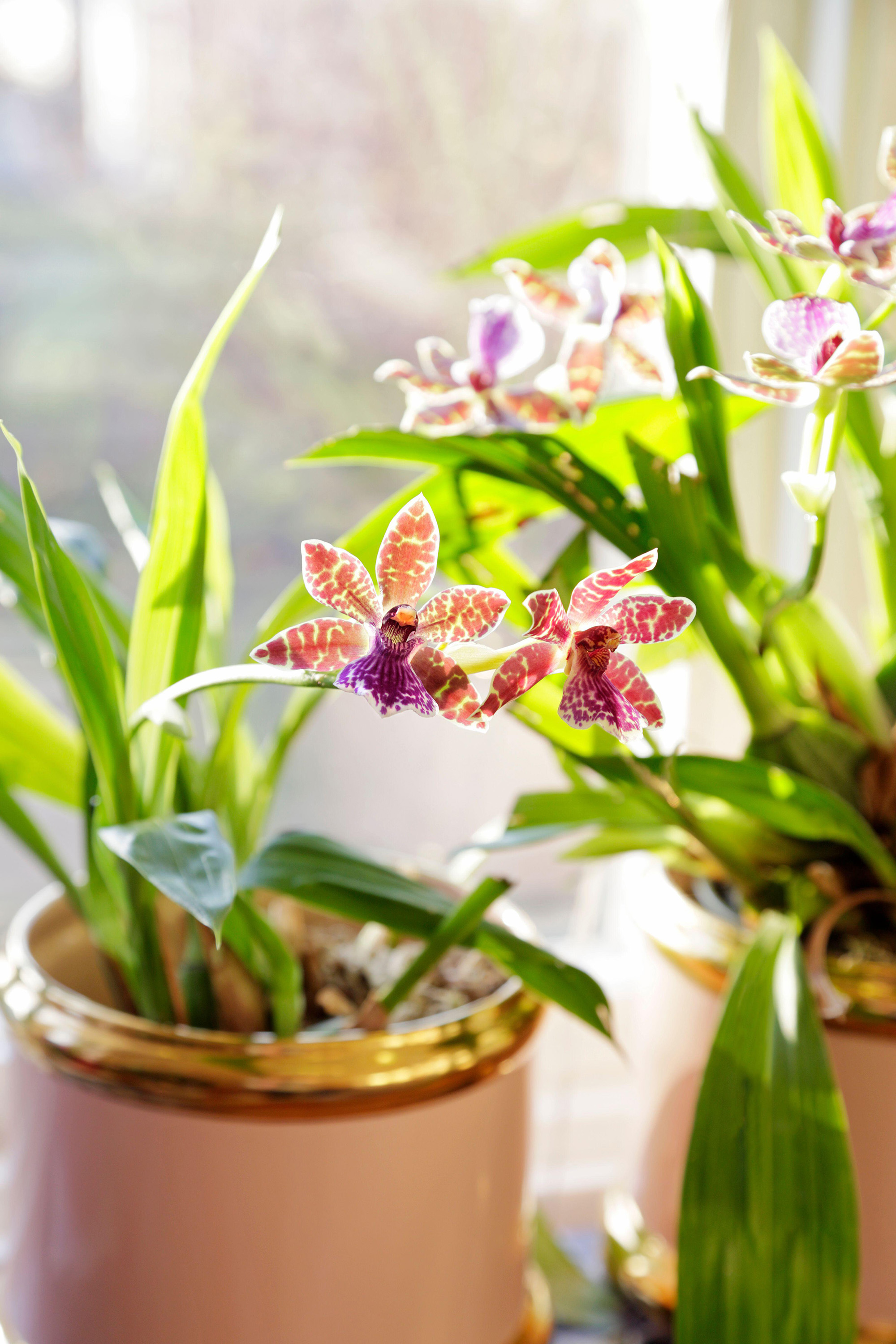
Avoid allowing your orchid to get too hot or too cold
3. Get the best light for orchids
Orchids tend to prefer indirect light – though some exposure to sunlight is ideal. However, similarly to temperature, when it comes to how much light an orchid should receive it's important to know where the orchid originates from. ‘Moth orchids and cool-growing oncidiums will require much less light than vandas or dendrobium,’ says Valeria.
‘Orchids prefer a location in the home that faces south or east,' adds horticulturalist Shannon Caringi at Trillium Living. 'Windows that face west can be too hot and sunny during the summer months. However, they may be perfect in cooler seasons.’
Keep an eye on your orchid’s leaves, as they are a good indicator of whether it is receiving enough light. ‘Orchid leaves can become sunburned, so avoid placing them in hot, direct sun,’ adds Shannon.
‘Orchids with dark green leaves are not receiving enough light, while light green leaves with yellow tones indicate that the orchid is receiving enough light to bloom.’
4. Check the humidity
As indoor tropical plants, orchids like a humidity range of between 40-70 percent, which is more humid than most homes.
If you only have a few orchids, then you can increase the humidity in that area by using humidity trays filled with gravel, or even just adding a few more houseplants nearby. If you have a number of orchids, then you may want to consider investing in a humidifier, although this risks introducing condensation and mold into the home.
When humidity is high, air movement is key, so a fan in the room – not pointed directly at the orchids – will keep them happy.
Perhaps the most low-maintenance spot for an orchid in your home? The bathroom. The humidity given off from regular showers and baths can be enough to sustain orchid-friendly humidity levels.
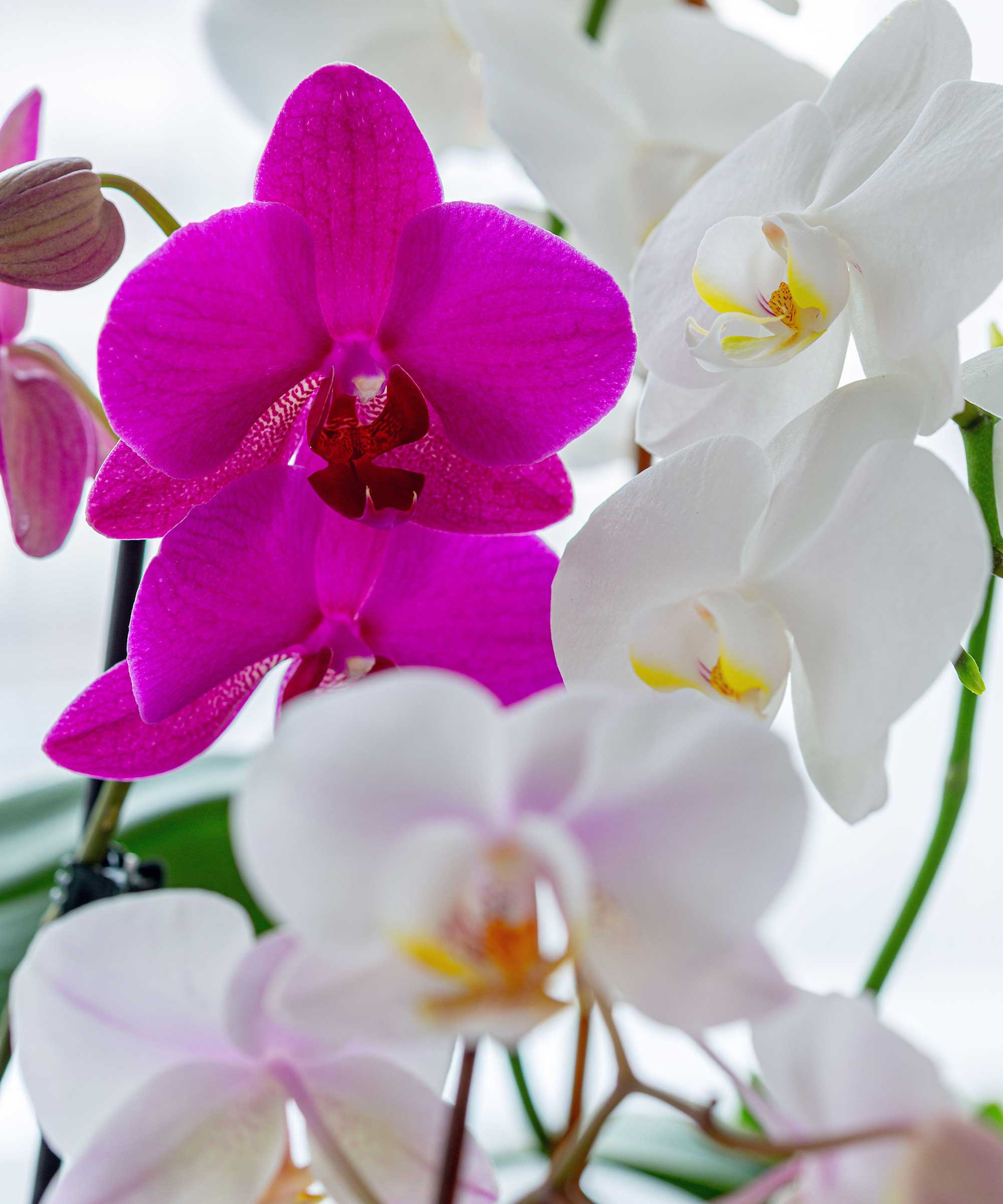
Orchids prefer a humid environment
5. Don't overwater orchids
Knowing how to water orchids is one of the more difficult aspects of orchid care to master.
‘Orchids are far more often overwatered than underwatered,’ says Paige Harmon. ‘For plants grown in bark, water once per week at most, and only if the potting medium is dry.
'Phalaenopsis grown in sphagnum moss need water less frequently – every 10 days should be sufficient. Be sure to water moss thoroughly, since moss that is very dry may not immediately absorb water.’
‘Orchids hate to sit too wet,’ adds Valeria Valkova. ‘There are many techniques and everyone will find the one that's just right. I recommend watering the pot in a deep container until it's submerged and leaving it for 5-10 minutes until the bark is fully soaked – but never water the orchid crown (center of the leaves). Remove the plant to drain completely.'
Orchids benefit from a mild fertilizer at every other watering. You can buy specific orchid feed – try Amazon for a range. Alternatively, Paige recommends using a general balanced fertilizer at half the normal dose.
The seasons will also affect how often your orchid will need to be watered. You'll find it needs less watering in the cool winter months, and more during the warm summer months.

John has been a garden journalist for over 50 years and regularly answers readers' questions in Amateur Gardening magazine, including many about houseplants. He has also written four books and has delivered many talks over the years on horticulture.
If your orchid leaves seem to be dying, the compost may be overly wet and airless, says John Negus. 'If it is, and the pot feels heavy with moisture, cease watering for the moment and push a pencil into the drainage hole to introduce drying air. If you are not already doing so, sit the pot on gravel to reduce the risk of subsequent waterlogging.'
John also suggests using rainwater when watering orchids, which has less chemicals than water from the tap.
6. Prune your orchid correctly
Again, the best way to prune orchids all depends on the variety you are growing – but when done right, it can help encourage them to rebloom.
For some, snipping off spent flowers is all you should do. However, it can also be a good idea to cut back other areas of the plant – for instance, if a stem has turned yellow.
Once your orchid has finished flowering, you may wish to repot it, too, if it's become overly root-bound.

An oncidium orchid
Can you propagate orchids?
Some orchids produce 'baby' orchids – otherwise known as keikis – which sprout from the stem. These can be planted to grow new plants.
Detach it, keeping the roots intact, says John Negus of Amateur Gardening magazine. Then, repot the orchid in a 4in pot of compost. Use epiphytic orchid compost if suitable for your variety, which consists principally of bark flakes, perlite and grit.
Should you mist an orchid?
Misting orchids can be beneficial and help improve humidity if your home tends to be on the dry side.
if suitable for the variety of orchid you're growing, mist with lime-free water or a proprietary orchid spray several times a week, recommends John Negus, an expert from Amateur Gardening.
However, if the orchid is excessively misted, then it can cause fungal growth and rot. This is especially the case if it is already in a humid environment – for instance, if you're growing it as a bathroom plant – so don't overdo it.
Remember to keep watering your orchid as usual, too.
You can find out how often to water orchids in our dedicated guide.
What is the best orchid to buy?
‘I recommend phalaenopsis orchids for beginners,’ says Shannon Caringi at Trillium Living. ‘Although they appear fragile, they are quite adaptable and perform well in most indoor environments.'
If you live in a cooler climate, then cymbidiums are more cold-tolerant than other orchid types.
‘When selecting an orchid, choose plants with a strong flower stalk and plenty of unopened flower buds. This ensures a long bloom time. Leaves should be clean and free from blemishes and dark spots,’ Shannon adds.
‘They should also appear full and plump. Wrinkled leaves indicate that the plant hasn’t been watered properly and is dehydrated.’
Sign up to the Homes & Gardens newsletter
Design expertise in your inbox – from inspiring decorating ideas and beautiful celebrity homes to practical gardening advice and shopping round-ups.

Melanie has worked in homes and gardens media for two decades. Having previously served as Editor on Period Living magazine, and worked on Homes & Gardens, Gardening Etc, Real Homes, and Homebuilding & Renovating, she is now focusing on her passion for gardening as a Senior Editor at Gardening Know How. As a keen home grower, Melanie has experimented with pretty much every type of vegetable at some point – with mixed results. Often it is the simplest things that elude you, which may explain why she just can't seem to master zucchinis.
-
 I’m an HVAC technician, and this is when I turn my AC on each year – plus 5 checks I always do beforehand
I’m an HVAC technician, and this is when I turn my AC on each year – plus 5 checks I always do beforehandSave yourself an AC hassle by running my checks and turning it on before big heat hits
By Josh Mitchell Published
-
 This simple marble hack elevates my budget-friendly wooden kitchen countertops and prevents the dreaded water damage for way less than you’d think
This simple marble hack elevates my budget-friendly wooden kitchen countertops and prevents the dreaded water damage for way less than you’d thinkThis design trick looks expensive, solves a problem, and was the easiest decision I made during my kitchen reno
By Charlotte Olby Published